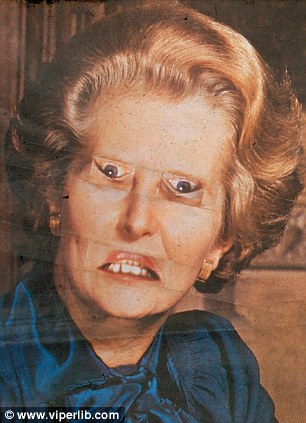Hi, this idea for a post came about after reading the other post asking people to describe their daily brew method.
I’ve been into coffee ever since I started chasing the ability to get decent coffee at home that’s strong enough so that most of the cup can be hot milk.
Cafetiere was always disappointing, the flavour always seemed to be a bit… “woody” if that makes sense? Almost like you’d expect ground coffee beans to taste like, and not the “actual extracted coffee flavour” that you’d expect.
I never bothered with any of the pourover methods because I couldn’t see how they were any good for “milk drinks”, they just seemed like different ways of making caferiere strength coffee but with more control over the brew.
I was never aware of aeropress really early on, and when I did hear about it it just looked like another way of making filter strength coffee so I steered clear of that.
Then I discovered the Moka pot which I used for years by cramming it with as much coffee as I could get into it which used to get pretty close to espresso strength but obviously not proper espresso.
Eventually we bought a Bambino Plus in lockdown and have been knocking out at least decent 2 lattes per day ever since (usually more if my wife is home)
The confusing thing for me has always been that the guys I have worked with over the years who have been really into their coffee have always used pourover or aeropress, and I’ve always been a little bit puzzled as to why they haven’t upgraded to an espresso machine yet (these people are all well paid and could definitely afford one if they wanted one, looking at the grinders they used to buy)
With all of this context in mind, what is the attraction to pourover or aeropress style coffee vs. espresso? E.g. espresso can = americano if it’s just a case of liking watered down coffee without a lot of milk, just add hot water. Please sell me on the idea of pourover or similar methods 🙂
It kinda sounds like your preferences (“strong enough so that most of the cup can be hot milk”) don’t align with the kind of results you’d get from a pour-over, so I admit I’m slightly confused as to why you want to be sold on the idea. It’s okay to prefer espresso-based drinks over pour-overs. You don’t have to be into both to enjoy coffee.
I’m a barista, so I’ll have espresso-based drinks at work and pour-over at home. I definitely enjoy both, if in slightly different ways, but I do have a preference for pour-over so I’ll at least try to answer your question of why a coffee-lover wouldn’t necessarily “upgrade” to an espresso machine. These are all just my opinions, and like I say to my clients, I’m not a coffee expert, I just work here.
-
Pour-over feels like it has a wider margin of error for dialing in new beans. Even if I don’t nail the pour-over for the first few cups of a new roast, I’ll probably have something that’s at least drinkable. Whereas with espresso, dialing in is a lot more finicky and IMO the results of a less-than-optimal shot are much more unpalatable than less-than-optimal pour-over. I like to switch up my beans at home very regularly, and don’t want to use up 3/4 of a bag dialing in before I get good coffee.
-
I find I can better taste the nuances of different beans in a pour-over versus espresso. That might just be because I’m more used to comparing pour-overs, but even working in a café and upping my espresso consumption significantly hasn’t overcome the distinct espresso-yness that I always taste regardless of the bean/roast.
-
I enjoy the ritual of it more than I enjoy making espresso. Not that espresso can’t be a ritual, but I love hearing my water boil, setting up my timer and scale, blooming, swirling my water. I love the level of control you get from cup to cup as well, it’s easier to adjust variables compared to espresso while still getting a drinkable cup, which encourages me to experiment a bit more freely.
-
I’m a cheap bitch, 10$ or so for a plastic V60 and some filters and you can already make some great coffee, the investment for espresso is a turn-off for sure.
Also, this is just a suggestion, but if you ever get the opportunity to taste an americano and a pour-over made from the same beans side-by-side, do it. You’d be surprised how different they are.
I definitely wanted to say a whole bunch of things before I scrolled down here, but it turns out you already said them all and you formatted it better than I would have too. So … yeah.
All I’d add is that espresso truly shines in its textural experience, it has a body and mouthfeel that no other extraction method can quite match. This is my favorite thing about it. Though it does have a distinctive flavor character, certainly, likely due to the suspended sediment. Paper filter removes all that.
Would be simple enough to test. Pull a shot, then pour it through a prepped filter paper, then taste it. Bet it just tastes like strong pourover.
Brewing under pressure definitely also makes a difference, although maybe not as big a one as folks think. Jkim has a pretty funny video about doing an immersion brew at 9 bar in a Flair.
Lot of folks also do espresso with a paper filter at the bottom of the portafilter, and they definitely still get espresso out. The micro fines are just blown straight through the filter by the pressure, I think. It probably does trap a little of the oils though? I dunno, I haven’t tried it.
Really interesting thanks. I’ve come to think of pressure on my Flair as not super important just for pressure’s sake. As long as you can hit at least 5-6 bars you’ll get espresso. I concentrate more on pressure as flow rate. Do I want to speed up certain parts of the extraction? Then up the pressure. So for example, the first seconds of an espresso pull might be fruity and more acidic, then gets sweeter and the final phase more bitter. A lot of factors influence this more than just time and every bean is different. But with the Flair, you could go slower (lower pressure) through the first phase and faster through the end if you like that profile.
Pull a shot, then pour it through a prepped filter paper, then taste it. Bet it just tastes like strong pourover.
Oooh if it’s a slow day at work tomorrow I might try to compare a filtered americano to a pour-over. Heck, might even make a normal americano as well and test all three.
-
Ask yourself a few questions:
- Do you like rituals?
- Do you have time in your day for a 7-10 minute process to make coffee?
- Do you always want a milk based coffee drink?
- Do you want to taste the more nuanced flavors of coffee or are you drinking it for another reason?
Coffee is super varied in origin, roast, and brew method. Changing one of those can dramatically change whether it’s “woody” or not. In my opinion, it’s like drinking wine. You can drink it just because it’s good and not think any further than that. Or you can get into the flavor differences between varieties, vineyards, years, etc. If you don’t want to go down that rabbit hole, stop now and do not think about it again. 😆
Espresso is so much goddamn work. I don’t have the time or energy in the morning to “get the perfect pull” and perfectly froth the milk and all that bullshit.
Instead, I turn on my electric kettle, run my burr grinder, put the coffee in the thing and then put water in the thing and presto - perfectly smooth delicious coffee that I can drink black or toss some milk if I want. I even have a stick frother I can use if I really want fancy frothed milk.
Also, best part is that my pour over kit, the french press I use when I’m reall pressed for time, and the stick frother, all cost 1/4 of the cost of a good espresso machine.
I can pull a really good espresso in 8 minutes after waking up on my flair 58. The hot water from the kettle is the “long pole in the tent”.
I do agree that a pourover setup is cheaper though.
And I’m happy you were able to figure out the perfect method and it works for you. But OP asked for the opinion of a pour over user and that’s what I’m giving.
For me, it’s less about how long its going to take to make and more about how long its going to take before I make it good. I’m not willing to spend weeks suffering through bad coffee while I learn how to make espresso. I also don’t want a particularly fuzzy morning to result in bad coffee. Espresso has a steep learning curve and is error prone. And yes, I bought an espresso machine, tried it, discovered this fact, and returned it.Pouro over is way easier for me and tastes great.
I understand that this is all a me problem. And that’s fine. Everyone likes their coffee differently and there’s nothing wrong with that. I experimented with lots of options and pour over is where I landed.
And I would encourage everyone here to do the same. Try a bunch of methods. Return the ones you don’t like. Do your coffee your way.
Sure and I didn’t say pourover was bad. I have no less than 4 pourover setups (5 if you include chemex).
I gave my opinion in pourover in another comment.
All I was pointing out is that the amount of time from zero to coffee isn’t necessarily a plus for pourover.
Totally agree to do coffee your own way. It’s all good (unless it sucks).
If you’re mixing lots of milk with coffee (a latte or just filter coffee with lots of milk) pourover won’t appeal to you.
The draw of pourover, I think, is to make very flavorful coffee that you drink black. Technically, the pourover advantage is complete control over temperature, coffee-water exposure time, and to get really even extraction (you can make sure all the ground get soaked)… but since it uses a paper filter? The resultant cup of coffee is also very clean (unlike, say, French press).
Also, a lot of artistry is made of how you set your grounds in the pourover filter, how you pour the water, and other things that are probably a little meaningless, but fun to play around with.
Similarly, aeropress gives the same control over variables but uses a more standardized micro filter in combination with immersion brewing (or like French press but with a filter and some pressure). The micro filter allows you to use finer grounds which probably means more complete extraction.
Either method will require a hot water source (usually a kettle). Neither method will be particularly expensive for the gear.
Mine uses a fine mesh metal filter that, imo, doesnt taste any different from paper filters.
I mean, paper filters are technically able to absorb oils that a metal mesh filter wont.
That may be true. But I’ve tried both and I don’t taste a difference. So I went with the less wasteful method.
That’s fair. I don’t think coffee filters are all that problematic, waste-wise though. They decompose just fine in at-home compost piles.
Pluses of pourover as compared to espresso
- More caffeine, if you need that in the morning
- Cheaper gear / more bang for your buck
- Typically much easier to get good results on light roast coffees, especially if you are interested in more delicate flavors.
- Less fussy to dial in a new coffee
- Usually less maintenance
- Doesn’t “blow out your palate”, i.e., straight espresso’s intensity is a downside for some
However
If what you specifically enjoy is coffee strong enough to cut through a lot of milk, most “pourover” methods are simply not going to produce a high enough concentration for that to make sense.[1] So it sounds like for you there’s no reason to get into pourovers, which is totally fine.
Most hardcore pourover nerds are usually drinking their coffee black and looking for coffees with strong “origin characteristics” / terroir that they want to taste without being masked by milk.
Yes, you can make an americano, which will probably not taste quite the same as a pourover of the same strength due to the extraction dynamics being different. And if what you already have is an espresso machine and no pourover gear, then an americano makes the most sense. (Also faster in a cafe setting than a pourover.)
But re: your buddies, if what they like is black coffee at pourover strength and they have a setup that makes that really well, why would they spend the money and time that espresso takes?
There is a notable exception, which is something like a south indian filter or vietnamese phin. I have an aramse sofi that I got from Kaveri in Berkeley, and it gets somewhere in the vicinity of moka pot strength probably. Metal filtered/self-filtering bed, zero bypass, so functionally quite similar to espresso, except that it’s just brewed with gravity and atmospheric pressure alone. Works great for milk drinks on medium or darker roasts. Lighter roasts, I find I really fight to avoid undrextraction with it. ↩︎
This is just the best “sell” for pour over
I switched to pour-over about a year ago, from a cheapo auto-drip coffee maker. Not sure if this makes sense, but I feel like I have a closer relationship with my coffee with this method. There’s a bit more of a ritual that incentivizes being more thoughtful in how I brew it.
As I drink it, I think to myself “yes, I made this,” as opposed to just putting grounds in a thing, pressing a button, and there it is. So each cup just feels more satisfying.
That’s what I get out of doing pour-over, but do what works for you. :-)
I use pour over when I want a clean, paper-filtered cup of coffee that is richer than your typical drip brew. All of the other methods I prefer to use — mostly Flair espresso and moka pot, but occasionally cafetière—are unfiltered. That leaves more body (oils and solubles) which I prefer. But sometimes you want that clean brew from the paper filter.
I think of a pour over as an immersion style of brewing. So in some ways it is similar to the cafetière. But because of the filter method, a French press is going to require larger grind size which results in a slightly different (in your case “woody”) extraction.
I also like that the pour over gives me more room to experiment with grind size and volumes. This is oversimplified but extraction comes down to basically three things: grind size, water volume/contact time, and temperature. The grind size on a cafetière can result in a hollow extraction sometimes where you’re not getting the full range of what the bean has to offer.
Of course, the main downside to a paper filter is the removal of oils, which also affects the flavor. Especially if you prefer an oily style in which the cafetière, espresso and moka excel.
Oh dang… just yesterday I was telling someone that pourover is a drip method as opposed to AP/FP immersion methods. What makes a V60 an immersion, and Mr Coffee a drip, if that’s what you’re saying?
It’s really just more my own person way of thinking about it after watching Hoffmanns’s method. It certainly is drip. But Hoffmann swirls the grounds so that you get a kind of best of both worlds of drip and immersion. I prefer to think of it as immersion when I’m trying to dial in the extraction because using Hoffmann’s method the grounds float around in the cone.
Edit to add another thought I had: I think Hoffmann has a video where he shows his swirling technique. The idea is that suspending the grains exposes them more equally to the water for a more balanced extraction. That said, many people do not do this with their pour over so it would have some other similarity to drip and percolator methods. If memory serves, Hoffmann also has a percolation vs immersion video that is worth watching.
Ah ok, gotcha. I’m not familiar with his swirl technique (I swirl the bloom but that’s about it, then it’s mostly just a slow pour), but I will check out that as well as the drip vs. immersion vid as that’s something I’m curious about. Thanks!
I tried to find that video for you but cannot. Maybe I dreamed it. His V60 vid swirls at the bloom only then pulses. But I swear about a year ago he had one where he also excavated the grounds with a spoon and then swirls to immerse the grounds evenly.
That does sound familiar! Could it have been Scott Rao? https://www.scottrao.com/blog/2017/9/14/v60-video
Pourover is primarily a percolation (“drip”) method, and it is confusing IMO to refer to it as immersion, unless your brews are quite unusually slow.
Water is constantly flowing through the bed of coffee and in doing so is pulling the solubles out of the coffee. There is some “immersion” happening when you fill or partially fill the cone with water and then let it draw down but this plays a minority part in the process.
The converse of this is an aeropress, which is primarily an immersion method. Most of the extraction is happening during the steeping phase, even though there is a brief percolation at the end when the coffee is pushed through the filter.
That sounds right to me. Now I’m wondering what the real meaningful difference between drip and immersion is… It’s something I’ve taken for granted (e.g. “well it’s dripping so it’s drip!”) so I’m going to check out the Hoffmann video that u/ColoradoBoy mentioned in another reply. Thanks for the reply!
It sounds like you enjoy darker roasts and perhaps flavors with milk?
Pour overs is my go to for lighter roasts when I want a really clean sip-able cup that I can really enjoy the “pure” taste of the bean. They can be really strong depending on the method and tools you use (recently got the Orea V3 and I’ve been blown away with the strength of it). But I also don’t tend to go for darker roasts in general, instead preferring more floral notes.
The best coffees I’ve ever made have been pour-overs.







